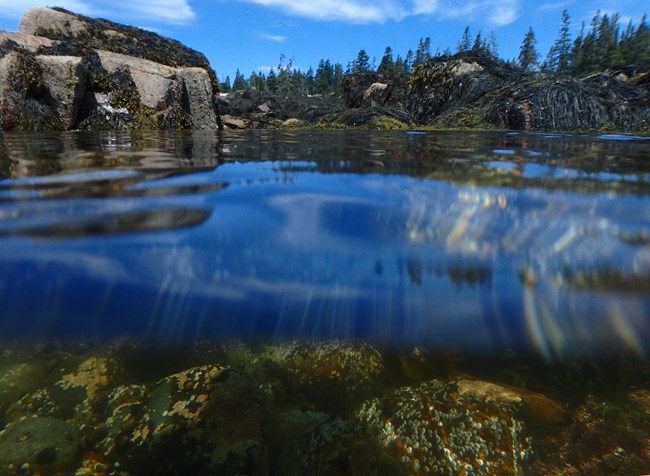
Photo by Ashley L. Conti, Friends of Acadia, NPS Exploring Acadia's TidepoolsThe natural phenomenon knows as 'tides' happens twice-a-day, every day. A variety of plants and animals become exposed on the rocky shores of Acadia in tidepools, which are depressions in the rocks that trap seawater when the tide recedes. Exploring these protected resources of Acadia provides an opportunity to peek through a window to the sea. To ensure the health of our resources and the safety of visitors, please show respect and follow the guidelines laid out below to minimize impact. We need your help to keep our coastal wildlife protected. Protect the Marine LifeRemember these marine animals and the tidal ecosystem are very fragile. Our careless handling and footsteps can do damage that the changing tides cannot. Keep in mind these tips for your safety and for the protection of marine life. Home Sweet Home

NPS Photo/Crystal Lewis Tidepooling SafetyTidepooling can be a safe and fun activity if you keep certain things in mind. You are standing at the edge of the ocean, so always be conscious of ocean waves and surf and know when it's time to return to the safety of dry land. Know When to GoThe opportunity to tidepool occurs between the window of time 1.5 hours before to 1.5 hours after low tide. It is best to start tidepooling before low tide and to leave as the tide is rising. Before you head out to the intertidal zone on your own, check the tide chart for your location: Go Low and Slow
Eyes on the Sea
Keep Kids Close
“Sea” a Whole New World
More About Tidepooling in Acadia |
Last updated: May 14, 2024
